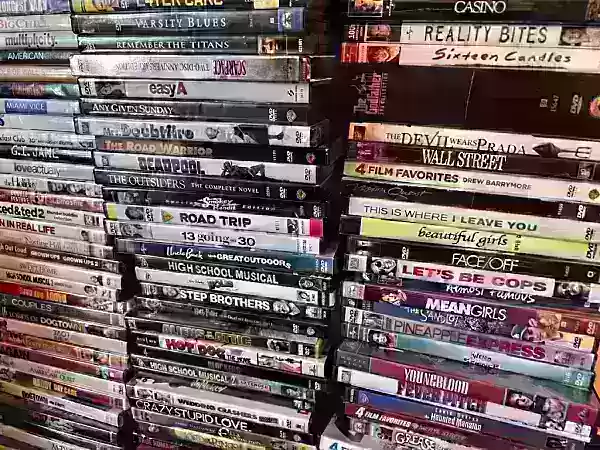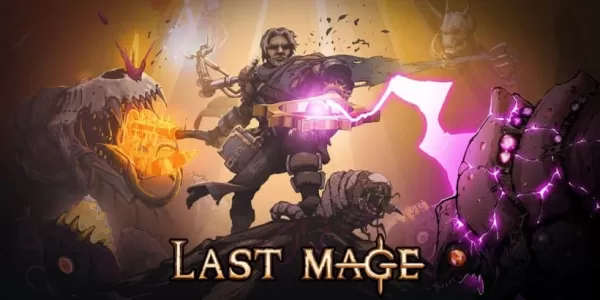If, like many film lovers and collectors, you have a shelf full of DVDs, recent reports may leave you wondering whether any of your collection has fallen victim to the dreaded DVD rot. Even if you’re unfamiliar with the term, disc rot is a known issue among physical media enthusiasts. It’s a problem that has affected various types of optical discs over the years—from LaserDiscs to CDs and even video game cartridges. Any disc can be vulnerable to chemical degradation for a number of reasons, potentially leading to playback issues or, in the worst-case scenario, complete failure to read the disc.
While encountering disc rot is often a matter of bad luck rather than poor handling, some cases point to manufacturing flaws. One such example involves Warner Bros. DVDs produced between 2006 and 2009. This issue recently gained renewed attention thanks to an article by *JoBlo’s* Chris Bumbray, who discovered it firsthand on classic WB box sets featuring Humphrey Bogart and Errol Flynn. However, this isn’t new information within collector circles—YouTuber Spencer Draper, a renowned expert in physical media under the name Damn Fool Idealistic Crusader, had already explored the topic in depth in a 2021 video, noting that others had observed the issue before him.
The Root of the Problem and Warner Bros.’ Response
Through careful research, Draper and fellow collectors traced the issue back to one specific source: the now-closed Cinram plant in Pennsylvania. Not all Warner Bros. DVDs from this period were affected—only those manufactured at this particular facility. The key identifier lies in the tiny manufacturing codes etched into the inner ring on the data side of the disc (more on how to spot that later).
Draper, who owns an estimated 5,000–6,000 films across multiple formats, began inspecting his entire collection after learning about the issue. He found that digital backups or quick scans couldn’t guarantee a disc was rot-free. The only way to be certain was to test each disc thoroughly—not just the main feature, but also the menus, extras, and bonus content.
After reaching out to Warner Bros. Home Entertainment, Draper received replacements for most of the affected titles, provided they were still in production. In response to inquiries, WBHE issued a statement confirming their awareness of potential issues affecting select DVDs from 2006 to 2009. They noted that they’ve been working directly with consumers for nearly a decade to offer replacements or alternative solutions when possible. You can contact them via email at [email protected] if you believe you have a defective disc. However, some titles are now out of print or no longer licensed, which means replacement may not always be possible.
How to Identify Affected DVDs
If you're concerned about your own collection, start by checking the copyright year on the back of the DVD case. If it falls between 2006 and 2009, further inspection is needed. Look closely at the inner ring on the backside of the disc. If you see the letters “IFPI” followed by additional characters, there's a chance it came from the problematic Cinram plant.
These markings are often very small and difficult to read without magnification. Alternatively, check the back cover of the DVD case—if it features a small blue stamp reading “Disc Made in Mexico,” then it’s safe, as these were produced at a different facility.
If you want a quicker method, Draper suggests simply inserting the disc into a player and fast-forwarding through the main feature and extras. While not foolproof, it can help identify if the disc is having trouble playing.

Draper has compiled a helpful list of titles he’s confirmed as affected, which serves as a useful reference for collectors. For example, HBO’s *Tales From the Crypt* DVD sets were impacted, and due to complex rights issues, the show remains unavailable for streaming or digital purchase. For fans, collecting these DVDs may be the only option—even though many copies might not play properly.
Unlike LaserDisc rot, which tends to stabilize after a certain point, WB DVD rot appears more unpredictable. A disc might work fine today and fail tomorrow. This inconsistency makes it especially frustrating for collectors trying to preserve rare titles like Volume Two of the classic RKO Tarzan films, which had its only physical release during this troubled period.
What’s the Life Expectancy of a DVD?
Despite these concerns, widespread DVD rot isn’t the norm. Sony estimates that a typical DVD has a life expectancy of anywhere between 30 and 100 years when stored and handled properly. Many early DVDs from the 1990s remain fully functional, proving that longevity is possible when production quality is high.

Blu-rays have also shown strong durability so far, although there have been isolated incidents—such as a limited batch from a French manufacturer. Criterion once faced a similar issue with certain Blu-rays from a specific pressing plant, but unlike Warner Bros., they publicly acknowledged the problem, listed affected titles, and offered exchanges.
Warner Bros. has yet to provide an official list of affected titles or openly confirm the link to the Cinram plant. Some customers report varying levels of success when contacting support, including delays and requests for receipts that many people no longer have. Additionally, newer reissues may lack bonus features present on older editions, as Draper discovered with the 2006 *Pat Garrett and Billy the Kid* DVD.
For physical media collectors, owning a tangible copy has long been a safeguard against the volatility of streaming platforms. However, the WB DVD rot issue serves as a reminder that even physical formats aren’t immune to time and manufacturing flaws. The closure of the Pennsylvania Cinram plant may be in the past, but its legacy continues to haunt collectors today.



 LATEST ARTICLES
LATEST ARTICLES 












